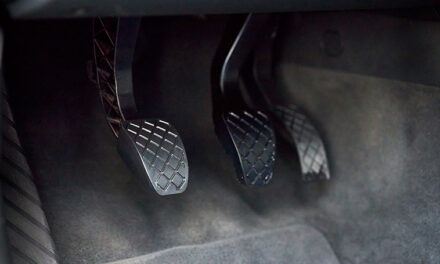Today’s vehicles are distributorless, so they need a way to determine timing – when the intake and exhaust valves open and close, and when the pistons go up and down. Vehicle engines have four-cycles: Intake, compression, combustion, and exhaust. On the intake stroke, the camshaft opens the intake valves to allow air and fuel into the engine. Once in, the pistons rise and compress the gas and air to get it ready for the combustion stroke.
On combustion, the spark plug sparks and causes an explosion in the cylinder, pushing the piston back down. On the compression and combustion strokes, the intake valves are moving to their closed position and the exhaust valves are opening to allow the results of the explosion to leave through the exhaust. On the exhaust stroke, the piston pushes the used gas and air out through the exhaust valves and through the exhaust system.
Timing
Since two solid objects cannot occupy the same space at the same time, the valves have to close as the piston rises. The camshaft sensor tells the computer where in the process the camshaft is. The crankshaft sensor tells the computer where in the process the crankshaft is. The computer uses the signals from both sensors — or either, if a vehicle has one or the other — to determine several pieces of information the engine needs to run efficiently, including the speed of the engine (rpm), which in turn tells the computer to open or close the fuel injectors for more or less fuel.
Camshaft Sensor Locations
The camshaft sensor is usually located near the top of the engine. It might be on the top of the block, on one or both heads, or on the intake manifold, usually near the timing cover. In some cases, you might find the camshaft sensor behind the timing cover. If the camshaft sensor is on the exterior of the engine, it is usually easy to replace.
Crankshaft Sensor Locations
The crankshaft sensor is usually located near the bottom of the block, toward the front of the engine. In most cases, you’ll find it behind the harmonic balancer. In some vehicles, you might find the crankshaft sensor behind the timing cover, near the bottom of the block, though this is rare. As long as the sensor is on the outside of the block, it is relatively easy to replace.
Tips for Replacing the Sensors
In some cases, a code for a camshaft sensor doesn’t mean the sensor is bad. For example, a Dodge Hemi engine has cam phasers on the cam gears, plus a cam oil sensor under the intake. If the sensor malfunctions, the computer could send a code for the camshaft sensor. In some cases, a crankshaft sensor code could mean another problem causing the crank sensor to have an incorrect reading.
- Before unplugging the pigtail, check the wiring to make sure that it is in good condition. You might have to pull the wiring loom back a little to see a good 3 to 4 inches.
- Use a flathead screwdriver to gently pry the plastic locks on the sensor away from the pigtail.
- Always pull the pigtail straight out. If it doesn’t want to come off the sensor easily, work it back and forth with a gentle motion. You don’t want to damage the pins inside.
- Be sure to catch the bolts when you remove them. If they fall into the engine compartment or onto the ground, you might not find them. Most sensors do not come with new bolts.



![[Vehicle Fitment]: Compatible with Chevrolet Equinox 2010-2017, HHR 2006-2011, Impala 2014, Malibu 2008-2014, Cobalt 2006-2010, Captiva Sport 2013-2015, Orlando 2012-2014; Compatible with GMC Terrain 2010-2017---2.0L 2.2L 2.4L Engine [Vehicle Fitment...](https://m.media-amazon.com/images/I/41qZRm56KBL._SL100_.jpg)














